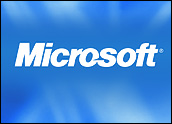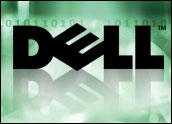
Many IT analyst events qualify as exercises in ridiculous self-promotion, but IBM’s recent Smarter Systems for a Smarter Planet event at the company’s Almaden Lab had a more sublime goal in mind: to qualify the hot topic of workload-optimized systems and quantify their value to business partners and enterprise customers. Along the way, the company drew a firm line connecting these solutions to its Smarter Planet initiative.
What are workload-optimized systems? Basically, solutions designed, configured and integrated to provide optimal performance for specific business applications or processes. Workload optimization has garnered increasing attention since last July, when IBM introduced its Smart Analytics System (SAS) 7600, a Power 550-based solution designed for advanced business analytics. The SAS 7600 delivers up to three times the performance of competing analytics products while requiring only half the data center floor space, according to the company.
There are competitors to IBM SAS — many of them relatively small specialists like Teradata — but it’s reasonable to assume that high performance computing (HPC) vendors, including Cray and SGI, are exploring the market, too. Then there are the big guns, especially Oracle, which cited workload optimization as a critical component of its Sun acquisition and has been promoting its Sun-based Exadata clusters as superior to IBM systems.
No New Thing
Sadly, Oracle muddied the waters by comparing new Exadata tpmC numbers against Power 595 benchmarks posted in 2008 — virtually ancient history in HPC terms. However, its aggressive efforts provide valuable subtext for IBM’s Smarter Systems messaging. In essence, the company was addressing: 1) enterprise customers trying to ascertain the value of workload optimized offerings, especially the new SAS 5600 (Intel) and SAS 9600 (mainframe) offerings; and 2) competitive issues around Oracle and its Sun system resellers.
Contrary to popular wisdom, IT strategic messaging tends to be more evolutionary than revolutionary, since it needs to be flexible and nimble enough to adapt to rapid technology and marketplace evolution. Is strategic messaging an important topic? Absolutely, because of the way in which it reflects — consciously or unconsciously — a vendor’s view of itself, other vendors and the greater marketplace.
In the best circumstances, messaging leverages concrete statements backed up by facts, relevant past experience, and viable supporting comments from partners and customers. At its worst, messaging is fraught with vague claims, shoddy thinking and outright fantasy.
So how did IBM’s Smarter Systems announcements stack up? Pretty well, overall. For enterprise customers, the company emphasized its deep experience in workload optimization and how partners and clients are using those technologies to their advantage. In fact, workload optimization is no new thing for IBM. The company sold its first such solutions in the late 50s and early 60s. Keep in mind that HP and Sun didn’t even begin developing server products until decades later.
Since IBM’s workload optimization credentials have been well-established for some five decades, its no surprise that the technology underlies a host of company solutions, including WebSphere DataPower Appliances, WebSphere CloudBurst Appliance, Tivoli Foundation Appliances, ISS Proventia Server Intrusion Prevention System, Informix BladeCenter Cluster, Cognos Now!, and Lotus Foundations. That point is also clear in IBM’s newest systems, which extend workload optimized business analytics capabilities across the company’s entire server portfolio.
Tapping Sun Customers
Just how valuable these systems can be was the subject of IBM partner and client testimonials. Synopsis, an IBM business partner in Latin America, recently helped Banco de Credito del Peru migrate to new IBM-optimized systems in a matter of days, thus realizing 30 percent more system efficiency while extracting new insights to improve customer service.
AfriSam, a building materials firm in South Africa, moved from Oracle Database on HP servers to IBM DB2 on Power Systems in one weekend, reducing storage requirements by about a third and realizing significant cost savings.
It’s true that there’s a certain amount of manufactured melodrama in highlighting the efforts of handpicked partners and customers, so how likely or well might IBM’s strategy resonate with non-clients? Let’s just say that the company is putting its money where its mouth is by dedicating up to half a billion dollars in global financing funding to entice Sun business partners to join the IBM party.
That’s a good chunk of change that reflects how seriously IBM takes Oracle as a competitive threat, but it also demonstrates the company’s willingness to strike hard at a competitor whose lack of experience as a system vendor may undermine its ambitions.
That deep pool of finance resources should also aid the partner development efforts, which have resulted in the migration of hundreds of Sun’s customers to IBM Power Systems over the past few years. Additionally, Oracle’s decision to bring Sun’s 4,000 biggest accounts inside is likely to make the idea of an IBM relationship look pretty darned attractive to many Sun resellers.
IBM’s success is anything but assured — but then again, neither is Oracle’s or any other vendor whose sights are set on the still developing market for workload optimization. That said, the past successes, current capabilities and future road map of IBM’s workload-optimized systems give the company a sizable edge over competitors. Those points were sharply defined at the Smarter Systems for a Smarter Planet event, and we expect IBM to continue hammering them home in the months ahead.
E-Commerce Times columnist Charles King is principal analyst for Pund-IT, an IT industry consultancy that emphasizes understanding technology and product evolution, and interpreting the effects these changes will have on business customers and the greater IT marketplace.












































Social Media
See all Social Media